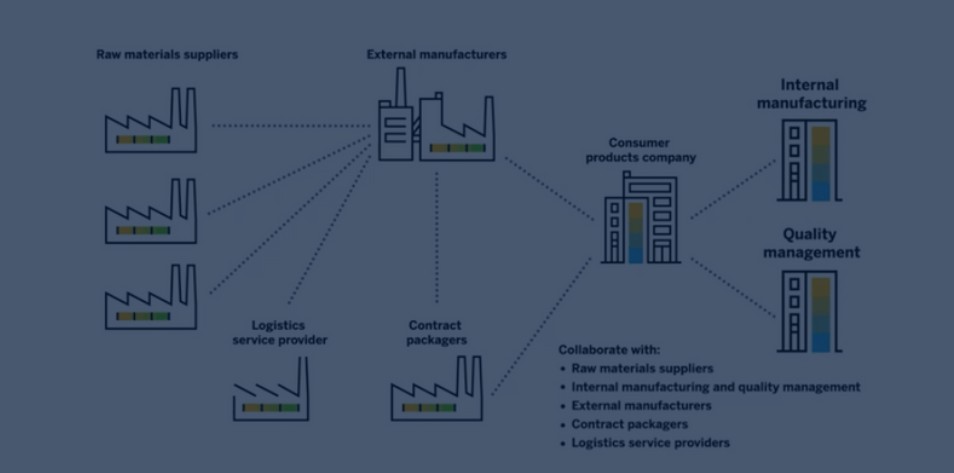Data is a strategic asset. Smart enterprises deploy Artificial Intelligence (AI) to gain strategic advantage from their data. But the devil lies in the implementation. About 87% of data science projects never make it to production. The reasons for such a high failure rate go far beyond weak project management capabilities or unclear targets. A major problem relates to the difficulties and costs associated with managing data. Data virtualization comes to the rescue. Gartner’s Market Guide for Data Virtualization estimates that by 2022, six out of ten enterprises will co-opt data virtualization in their data integration architecture.
Here are five ways data virtualization speeds up AI-based data science projects.
1. Easy Access to Data
A common issue connected with data is the lack of proper access to data sources. Another big issue is the inability to use the right data or extract relevant data from the huge volumes of available data.
As an enterprise grows, data management becomes complex. Data grows into different, disparate databases, stored in different formats. Finding and preparing the data needed for the project takes up the bulk of a typical data science project. Tasks such as identifying data, ingestion, cleansing, and preparing the input to the algorithm consume 70% to 80% of the total project time. Conventional processes such as batching, indexing, aggregation, and sampling create long cycles. The delay inhibits real-time business decisions.
Data virtualization cuts the time for such tasks.
Integrated platforms such as Denodo offer fast and easy access to all types of data. Such data virtualization platforms enable:
Data integration from various sources in real-time. A typical data scientist grapples with five to seven data storage devices. They also grapple with multiple languages to manipulate and extract data. A good data virtualization tool extracts all data through a single layer. Data virtualization acts as a middle layer that connects data sources with the consumers of data.
- Fast queries. Virtualization tools offer businesses the agility to make queries across many data sources. These tools even query silos.
- Instant access to huge, disparate, and distributed datasets. Often, the costs associated with accessing such workloads make data projects unviable.
- GUI to make integration tasks simple, even for lay users. The data scientist makes modifications using SQL and JAVA, without having to learn multiple languages.
2. Ensure Relevance of Data
Algorithms mature with time. Initially, the data scientists train the algorithms. Over time, these systems learn from transactions. They acquire the intelligence to support normal day-to-day decision making. The more data these algorithms receive, the more they learn, and the more accurate their predictions.
But the caveat is feeding the right data. Feeding data into the algorithm is easier said than done in today’s complex data landscape. About 80% of the available data is unstructured. The bulk of the data is unclean. Cleansing data attracts huge costs. Feeding wrong or inaccurate data deepens the error.
Data virtualization tools help data scientists:
- Access data from its original location, on-demand. This reduces the bloat, does away with version conflicts, and makes cleansing unnecessary. The data is always current.
- Access to the data catalogue, to identify the needed data. For instance, a large data set may have seven or eight fields with the header “revenue.” The data catalogue shows the business definition associated with the field, making it easier to use the right data.
3. Bloat Less Data Abstraction
Conventional data analytics involve making multiple copies of the same data. Each process typically results in a new copy. The zero-copy data virtualization process works on single access to the data and working on data from its source. The process avoids traditional techniques such as aggregations. Data virtualization platforms rely on:
- Real-time virtualized access to all data in memory. It stores a virtual representation of underlying data in memory, making the process smaller and fast.
- A cloud-based operating system agnostic approach, to avoid data movement. The platform creates an abstraction layer above the physical data, irrespective of the source, location, or format.

4. A single view of data
An effective data virtualization system auto-discovers data sources and metadata. It combines views from disparate data sources into a common data services layer and establishes a single view of enterprise data. The system does not have to replicate data, improving efficiency and accuracy.
A state-of-the-art platform such as Denodo:
- Identifies the appropriate data for any project, and provides traceability of such data.
- Enable seamless access to all data sources, be it spreadsheets, csq files, SQL files, APIs, or anything else. It connects easily to different sources and extracts live data.
- Ensures frictionless integration across multiple enterprise and cloud environments.
- Supports complex use cases. Algorithms and models optimised for deep learning and neural networks expand use cases. Some industries that benefit include health, life sciences, retail, and cyber intelligence. It also enables hyper-personalisation across sectors.
5. Objects
Data virtualization tools create objects to speed up data analytics. Enterprises may use such objects to create starter packs or base packs for different projects. Base packs enable data scientists to hit the ground running.
Consider leasing a starter pack for a real estate company. A base pack may include data and algorithms. When the analysts, for instance, start a project on leasing, the starter pack offers the initial analysis and the basic data related to leasing deeds built-in. Not having to access or process such data again speeds up the time-to-market by 30% minimum.
6. Robust Data Governance
Data virtualization platforms such as Denodo enable robust data governance. It offers a consistent and reusable data environment, with:
- One-time access, where the user has to request access to data sources just once. Conventional data extraction tools ask for access to data every time. Every access comes with security risks.
- Limited access. Users have access only to the information relevant for work. There is no breach of compliance or client confidentiality.
- Single point of administration for enterprise data.
Implementing data virtualization needs a robust platform. Denodo helps enterprises connect to disparate data sources, including structured and unstructured sources, with zero data replication. It connects to any data source on the fly, much faster than conventional data extracts, and publishes the data for different applications, including AI tools such as Python and R. It delivers 80% time saving to traditional data integration methods.











